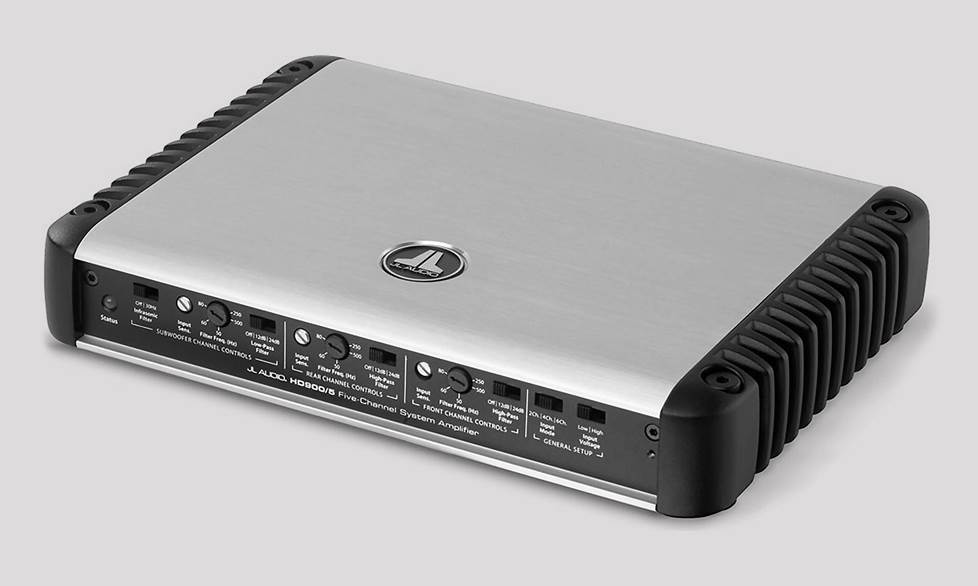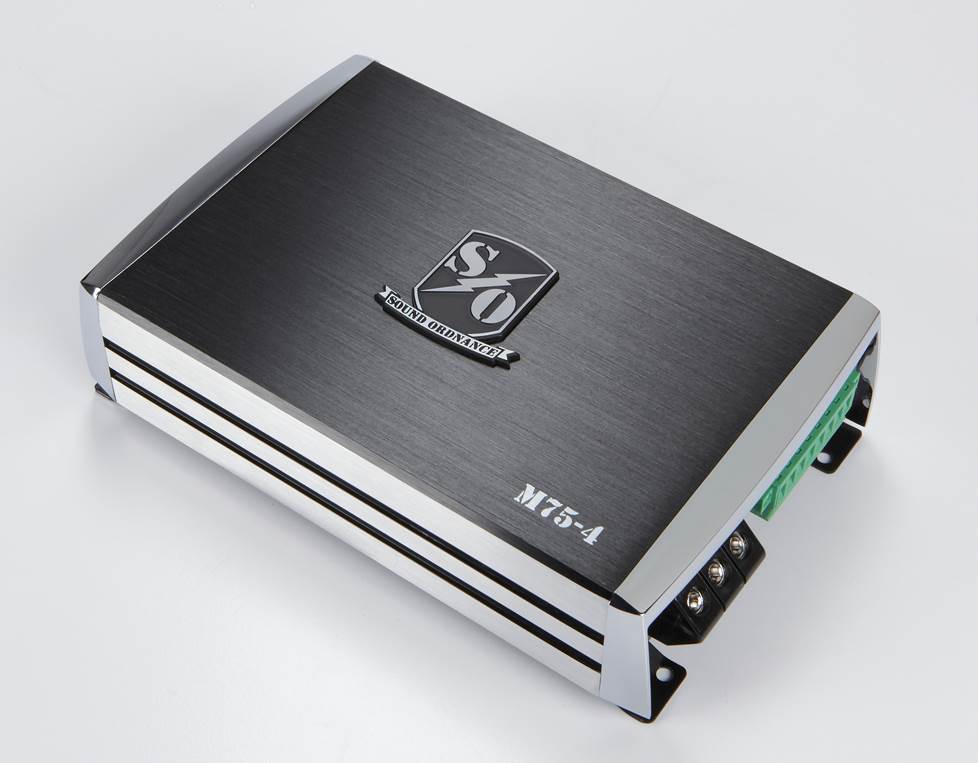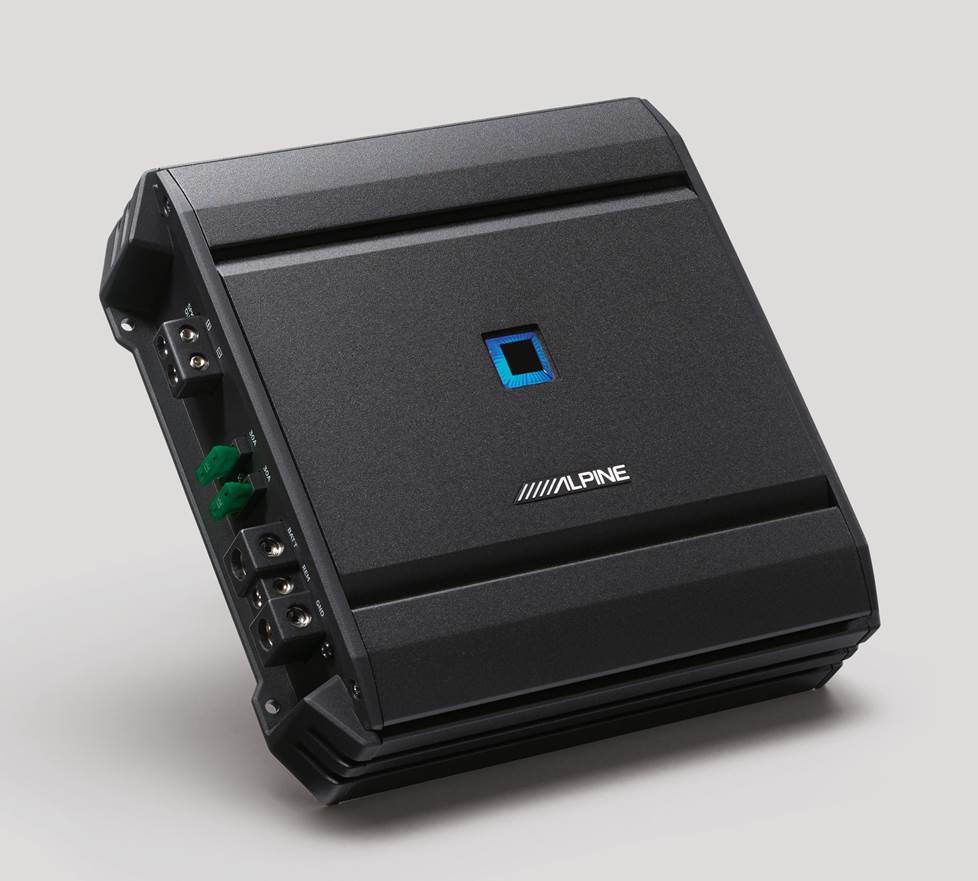5500 Watts Rms Car Audio Amplifier With Output of Continuous Wattage Constant or Infinite
When shopping for a car amplifier, there are a few basic questions that everyone has and a few use-cases that typically come up. This car amplifier buying guide will help answer those questions and get you started on the path to better car audio sound. We'll discuss:
- Why should I get an amplifier?
- Adding power to a factory stereo system
- How much power do aftermarket speakers need?
- How many channels should my amp have?
- How much power do I need for a subwoofer?
Why add an amplifier?
If you want your music to be loud, amplifiers are definitely part of the picture. But whether you run your system wide open or softly enough for conversation, a power amplifier will breathe life into your music, bringing out all of its excitement and detail. Here are a few of the main benefits of adding an amp:
- Better sound quality — Adding an amplifier gives you a clean power source that can drive your speakers without straining. Unlike an amplifier built into an in-dash stereo, an external power amp isn't limited by the space available — it can be designed without compromises. That means your music will sound cleaner and more defined at all volume levels.
- Power for upgraded speakers — A factory system or an in-dash receiver may not do justice to your upgraded speakers. If you're adding high-quality aftermarket speakers or component systems to your vehicle, they may require more power for peak performance than your existing in-dash receiver can provide.
- Powering a subwoofer — Subwoofers require significantly more power than a brand-name or factory in-dash receiver can provide. A separate amp is a necessity.
Video: How to choose a car amplifier
Let's start with a tutorial from Crutchfield's training manager. In this video, JR explains everything you need to know about choosing an amplifier for your car audio system. Be sure to read the rest of this article after you watch the video! We cover a few things in more detail below.
I want to add some oomph to a factory system
Standard factory car stereos usually have no more than about 10 watts RMS maximum output power per channel, in spite of what the car dealers advertise. That's usually not enough power to overcome road noise without sounding shrill.
A great way to upgrade your sound system without changing the factory look of your vehicle is to get a factory system upgrade. Each of these systems include an amplifier and other sound processing gear custom-designed for your specific vehicle that will vastly improve the sound and leave the interior looking stock.
A more economical way to upgrade your sound system without changing the factory stereo or speakers is to get a compact 4-channel amp to boost the power for your front and rear speakers. The Kenwood amp pictured above or the Alpine KTP-445U Power Pack are good examples of these small, 4-channel amps that are tiny enough to be installed behind many dashboards and powerful enough to dramatically increase the quality and clarity of your sound.
Look for speaker-level inputs
If you're adding the amplifier to a factory system, look for a model with "speaker-level inputs" as one of its features. These amplifiers can handle the high-level signal from the vehicle's factory speaker wiring, making it easier to install them without extra electronic components.
DIY Installation Help
Amplifiers don't come with the wiring you need to connect them to your stereo.
- Wiring kits provide everything you need to send signal and power to your amp.
- You'll also need speaker wire to send signal from your amp to your speakers.
- A capacitor stores reserve power and delivers it when your amp needs it most.
- And don't forget the extra hardware you might need for a truly professional installation: battery terminals, power distribution hardware, fuses, etc.
How much power do my aftermarket speakers need?
All aftermarket speakers, especially component sets (separate woofers and tweeters), benefit from being fed more power than what a factory or even an aftermarket stereo can put out.
Among a speaker's published specifications you will find its RMS (or "continuous") power rating, usually as a range — "5-60 watts RMS power range" for example. The higher number represents the approximate driving power at which the speaker will play at its fullest and best according to the manufacturer.
Do not exceed the RMS power ratings
- For your speakers, use an amplifier whose top RMS output per channel is no higher than each speaker's top RMS rating.
- For your amplifier, get speakers with top RMS ratings that are equal to or higher than each amp channel's top RMS output.

The Infinity Reference 704a shows that amps can be pretty as well as powerful
So, if you already have aftermarket speakers, find out their top RMS rating. If your front and rear pairs have slightly different power ratings, it's okay — use the lower rating.
How many channels should my amp have?
Each "channel" of an amplifier is a discrete source of power, intended to power one speaker. How many channels you need depends on your plans for your audio system now and in the future.
I'm only powering my speakers
Many people like their music with a strong front stage and don't even use rear speakers. A 2-channel amplifier will be the practical solution when you only need to power a single pair of speakers. But if you like rear-fill sound in your car and want to retain front-to-rear fade control, get a 4-channel amp — one channel for each speaker.
I want to power speakers and a subwoofer
There are some other amp configurations to consider when you want to include a subwoofer in your system. A 3-channel amp can take care of a single pair of speakers plus a sub quite effectively.
A 4-channel amp can also be employed to run a pair of speakers and a sub — two channels bridged together to run the sub and the other two to drive the speakers. This gives you the option for future expansion of your system, allowing you to later change the amp over to run four speakers and add a separate amp for the sub.

JL Audio's HD900/5 five-channel amp can power your front and rear speakers along with a sub.
You may want to consider a 5-channel amplifier that can power your entire system from one convenient and compact package. It's four channels for your speakers, plus a fifth, higher-powered channel for your subwoofer. 6- and 8-channel amps take that all-in-one design and add even more system-building flexibility.
I plan to get new speakers along with my new amp
When building a system from scratch, one of the first questions you should ask yourself is, "How loud do I want this to be?" Car audio systems don't necessarily need massive amounts of amp wattage to sound loud, but having a lot of power available is good for the "headroom" of a system — the ability to deliver an emotionally impactful burst when the music asks for one. There's also the interior size of your vehicle to consider.

A Sound Ordnance M75-4 four-channel amp is an economical way to amplify your system.
How much power does my system need?
If you drive a compact coupe or hatchback, a sports car, or a small-cab pickup, for instance, an amp that's 50-watts RMS per channel, or smaller will probably do fine, overcoming road noises and adding clarity to your music. Look for speakers with a top RMS rating of at least 50 watts RMS to go along with the amp.
For larger vehicles and for those who just want more volume, you should step up to at least a 75 watts RMS per channel setup. A difference of 5 or 10 watts either way won't make any difference and probably can't even be heard. Matching speakers will need to each have a top RMS rating of 75 watts RMS or more.
Those of you who want even greater impact and eye-popping volume out of your system will want to go for an amp with 100 watts RMS or more per channel. Get speakers or component sets that are each rated for at least the top RMS output power of each channel.
I only need an amp for a subwoofer
Bass is much harder to amplify than the rest of the spectrum of sound — that's why there are so many large and beefy subwoofer amplifiers out there dedicated solely to reproducing bass.
"Mono," or single-channel, amps are designed for subwoofers. They'll work with a wide range of impedances, and have tone controls and filters specifically made to help reproduce bass. Although many 2- and 4-channel amps can be bridged to increase their power enough to run a sub, they often then can't handle the sub's low impedance, and overheat or go into protect mode.

Alpine's S-A60M subwoofer amp puts out up to 600 watts RMS for bass.
How much power do I need for a subwoofer?
You want the bass to musically blend and be well-balanced with the rest of your system, so, here's a good rule-of-thumb guide to subwoofer power:
- If you're using your car's factory stereo — 50 to 200 watts RMS of power for the bass will do nicely.
- An aftermarket receiver — you might want 200 to 300 watts RMS of power for your sub.
- Amplified speakers with around 50 watts RMS per channel — plan on 250 to 500 watts RMS for bass
- A 100 watts RMS or higher per channel system — you'll want at least 1,000 watts RMS for your sub.
As with speakers, you'll need to make sure your subwoofer's top RMS rating is equal to or greater than the amp's top RMS output.
You'll also need to impedance match your sub amp and sub. It would be a shame and a waste of money to buy a couple of subwoofers and an amplifier, for instance, only to find out that the amp can't run the subs because wired together, their impedance would be too low for the amp to run without overheating. Remember, if you're adding a sub to a factory system, get a subwoofer amp with speaker-level inputs, so it can get its signal from the factory speaker wires.
Need more help?
Browse our entire selection of car amplifiers. If you need more help, give our Advisors a call at 1-888-955-6000. They have the knowledge and experience to help you find an amp that will meet your needs.
Source: https://www.crutchfield.com/ISEO-rgbtcspd/learn/car-amplifier-shopping-guide.html
0 Response to "5500 Watts Rms Car Audio Amplifier With Output of Continuous Wattage Constant or Infinite"
Post a Comment